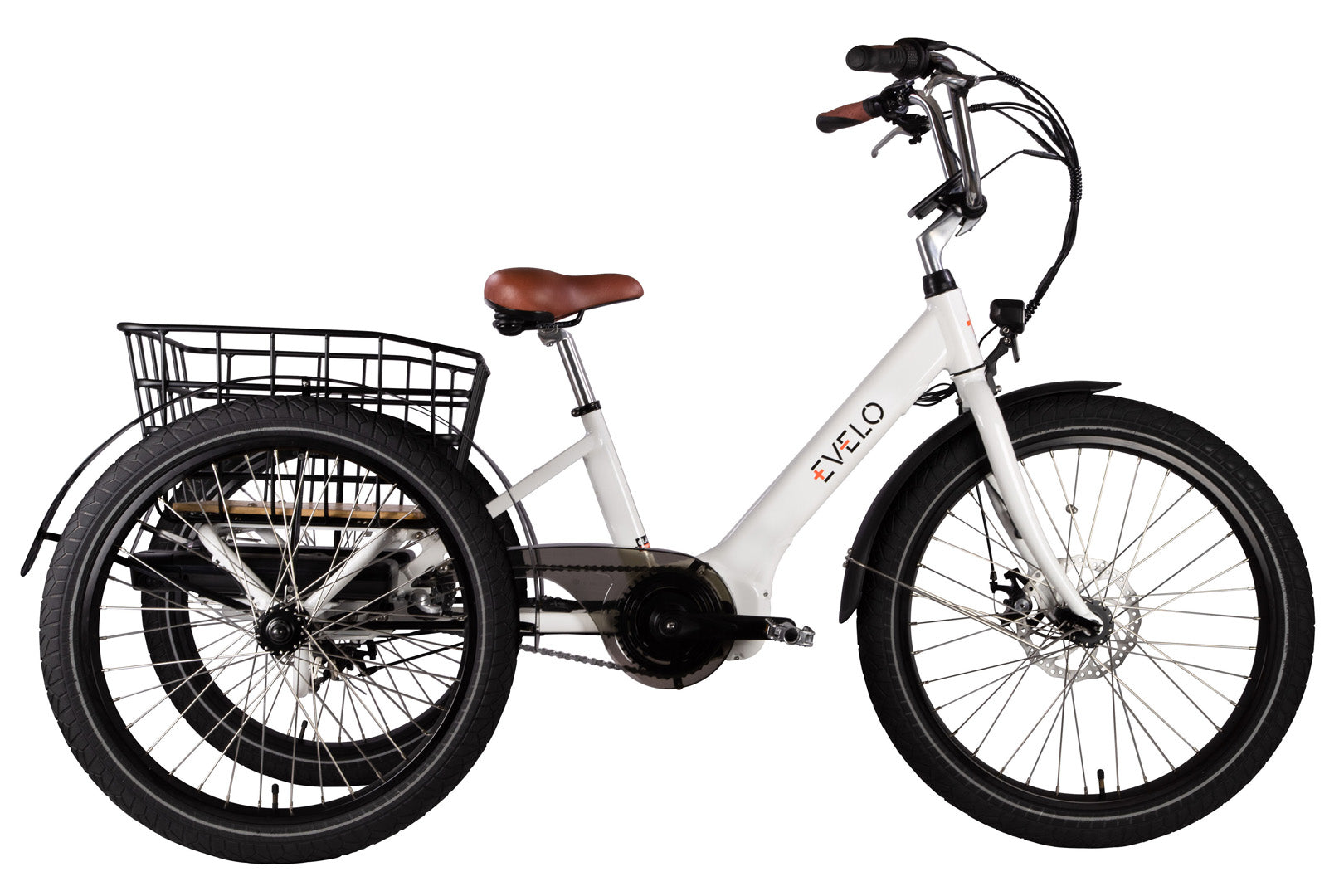AN INTRODUCTION TO ELECTRIC BIKES
BASIC OVERVIEW
An electric bicycle is, first and foremost, a bicycle. It uses the same designs, geometries, and components as any other bicycle, but also includes an added electric motor. This is fueled by a rechargeable battery, which gives riders an extra boost of power and ultimately provides a smoother, more convenient, and less strenuous cycling experience. By eliminating many of the obstacles that keep people from cycling—obstacles such as headwinds, steep hills, and bike commutes that leave riders tired, messy, and sweaty—electric bikes help make the freedom, exhilaration, and satisfaction of cycling available and accessible to a wide range of potential cyclists.
The idea of creating an electric bike has intrigued cyclists since the late 1800s, when several American inventors experimented with the possibility of combining the potential power of electric motors with the simple mechanics of the bicycle. It wasn’t until the technological advancements of the 20th and 21st centuries, however, that this idea finally became a viable reality. With lightweight motors, high efficiency rechargeable batteries, smoothly shifting drivetrains, and huge advances in bicycle components, today’s electric bikes provide a way for cyclists of all ages, fitness levels, and physical needs to enjoy the benefits of cycling, whether it’s a leisure ride, a workout, or part of a daily commute.For many, electric bikes are an attractive alternative to both conventional bicycles and traditional automobiles, providing an environmentally friendly, fun, efficient, and convenient way to travel.
THE GROWING POPULARITY OF ELECTRIC BIKES
Electric bicycles are becoming increasingly popular throughout the world, as more and more people look for efficient, affordable, and eco-friendly modes of transportation. In recent years, electric bike use has skyrocketed in Asia, most notably in China, which has established itself as the world leader in electric bike use. There are now an estimated 200 million eBikes in China, with millions more added every year.1
The explosive expansion of electric bikes in China has helped spur similar growth in other parts of the world. In Europe—the second largest market for electric bikes—electric bicycle use has been steadily on the rise. In 2006, there were approximately 98,000 electric bikes sold throughout Europe. A decade later, this number had risen to almost 1.7 million in annual sales.2
Electric bikes are also gaining increasing popularity in the United States, where eBike sales rose sharply from about 70,000 in 2011 to over 263,000 in 20173, and the growth is likely to continue accelerating.
The dramatic improvements in electric bicycle technologies and capabilities, as well as the rapid growth in the popularity of electric bicycles in recent years, have all made the prospects of owning and riding an electric bike particularly exciting. Whether they’re used by people looking for a low impact way to get back into shape, older cyclists seeking a more accessible way to enjoy leisurely bike rides, urban professionals attempting to simplify their daily commutes, environmentally conscious travelers hoping to decrease their emissions footprints, or anyone in between, it seems increasingly likely that “electric-assisted bicycles will change how people think about bikes.”4




